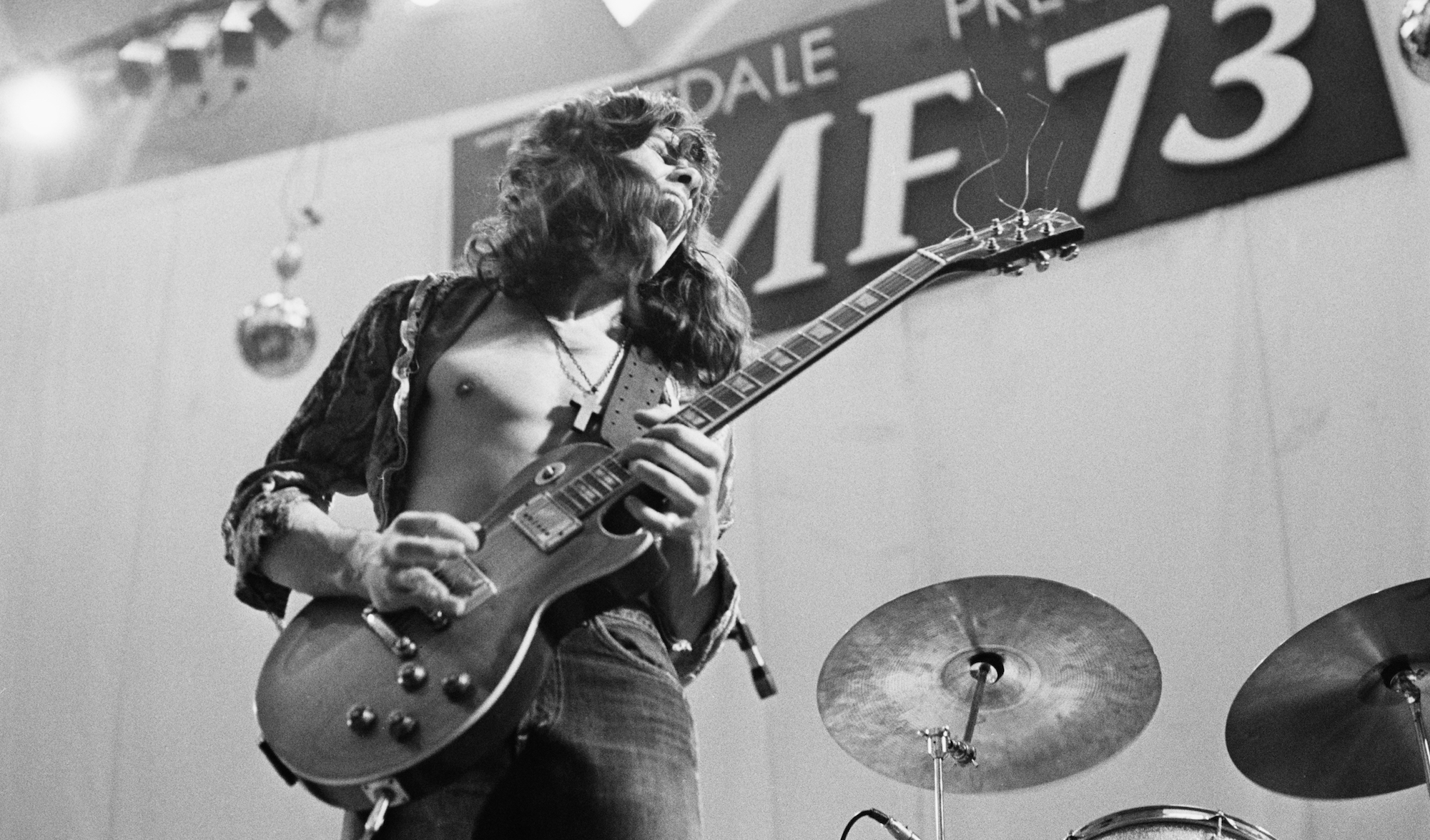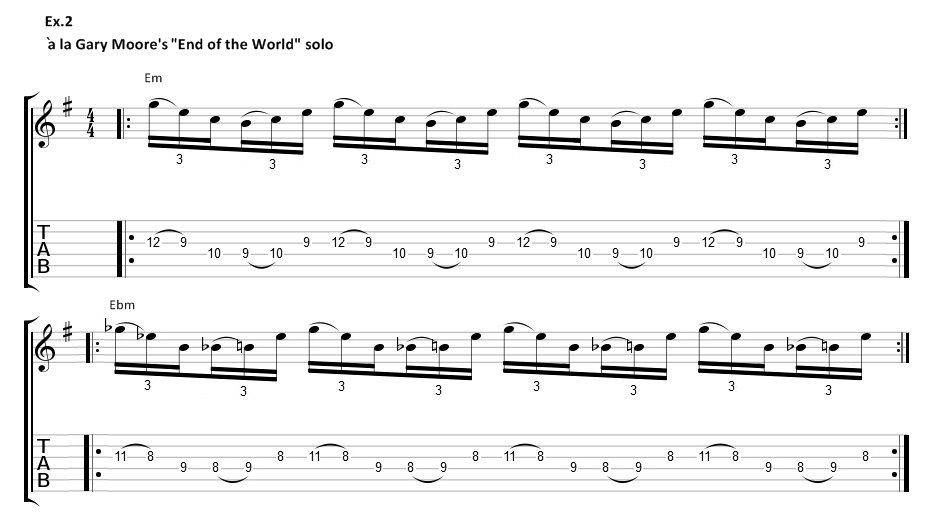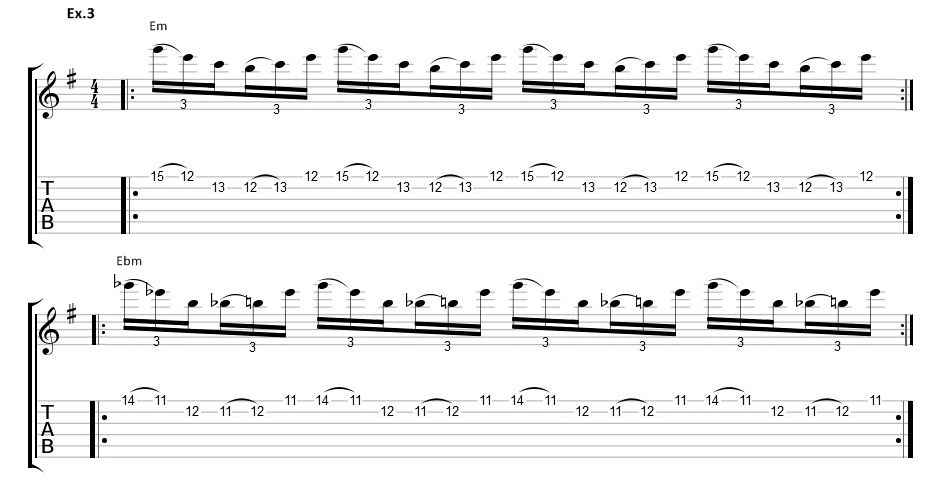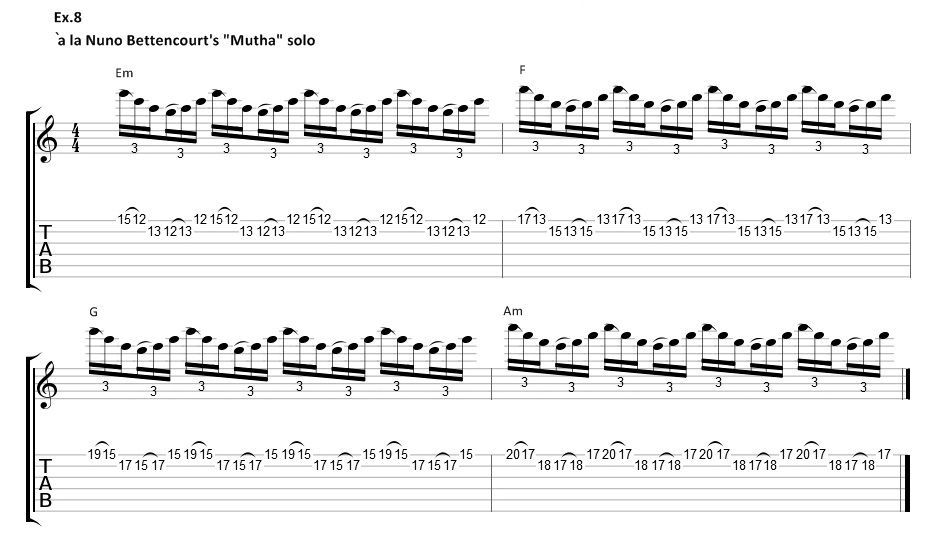How to Craft Sizzling Rock Leads Using Pivot Arpeggios
Generate cool-sounding repetition licks that flow and work well in a variety of musical contexts.

The goal to building single-note playing technique and increasing speed is a popular and passionate one among many improvising guitarists in a variety of musical styles.
While there are several paths one can follow to develop the finger strength and dexterity required to perform fast, clean licks and runs, you’ll find there’s much to gain by taking a small fragment of a scale or arpeggio and drilling on it until it becomes comfortable and seemingly effortless to perform.
In this lesson, I’d like to show you what I find to be a particularly effective approach to achieving this objective, and that is to use what some call a “pivot” arpeggio as a musical springboard to generate cool-sounding repetition licks that flow and work well in a variety of musical contexts.
We’ll begin by focusing on a popular arpeggio-based pivot lick that has been employed by many rock, metal, and jazz players alike. As you work through the examples and concepts presented in this lesson, you’ll hopefully learn how to generate your own variations based on a single musical idea.
Doing this will no doubt expand your repertoire of licks, so this is a worthwhile pursuit for any aspiring lead guitarist. Let’s get started!
At the core of this lesson is the aforementioned pivot arpeggio, which may be thought of as a major seven shape.
After a quick listen to Gary Moore’s opening guitar solo in “End of the World,” from his classic album Corridors of Power, you’ll locate the origin of this timeless and breathtaking legato phrase.
All the latest guitar news, interviews, lessons, reviews, deals and more, direct to your inbox!
During the middle section of Moore’s solo, you’ll hear him distinctly perform a fluid legato repetition lick (performed in two different fretboard positions) that has since filtered into the playing of countless other guitarists over the years.
Example 1 depicts a basic version of this celebrated lick, performed here on the D and G strings, in the key of E minor and at a moderate speed, using an eighth-note triplet rhythm.
In terms of notes and their melodic-harmonic function, we have the note set G, E, C, B, which forms a Cmaj7 arpeggio and, relative to an E minor tonal center, give us the minor third, root note, minor sixth, and perfect fifth, respectively, painting an Em(addb6) sound, which lives within the E Aeolian mode (E-F#-G-A-B-C-D), also known as the E natural minor scale.

Practice the repeating note pattern slowly until you get a feel for how the phrase should flow and develop the two-hand coordination necessary to perform it quickly, seamlessly, and with minimal effort, which you’ll discover entails keeping both hands as relaxed as possible and using economy of motion – small, efficient movements.
As you practice the lick, strive for a connected sound as the movement between the two strings and slurred activity begin to merge.
The pivot here is the C note located on the D string’s 10th fret, which functions as a sort of hinge or fulcrum connecting the B note on the D string’s ninth fret and the E note located at the same fret on the G string. After this pivot and string cross is performed, the six-note sequence begins again on beat three, on the 12th-fret G note, and the entire cycle repeats.
After you’ve practiced this lick a bunch of times at a slower tempo and acquire a feel for how it’s supposed to flow, you can kick it into high gear by performing it twice as fast at the same tempo, as 16th-note triplets, as demonstrated in Example 2.
This figure recalls the blistering flurry of notes heard in Moore’s “End of the World” solo, and as you play through the example, notice that once you’ve performed the entire six-note sequence four times (in bar 1) it shifts down a half step and one fret (in bar 2), from the key center of E minor to Eb minor.

Once you’re comfortable playing the lick this way, shift it up an octave to a higher fretboard position and the top two strings, as illustrated in Example 3.
This phrase recalls the octave shift you’ll hear Moore employ during his aforementioned solo. Notice that we’re employing the same fingering shape and movement on the top two strings that we used previously on the D and G strings, only now we’re three frets higher up the fretboard.

Example 4 introduces a variation to our previous six-note sequence, by reaching up to the high note A at the 17th fret and substituting that note for the 15th-fret G every other time.
This move requires a bit of a fret-hand stretch and some limberness to reach the high A note with your pinky, so be patient, and make sure your hands are warmed up first before attempting this move.
With practice, it will become easier to execute. Note that, as you reach for the A note, you can shift your fret hand up the neck slightly, then quickly shift it back down the play the E note at the 12th fret again with your index finger.
The introduction of the high A note adds variety and color to the sound of the lick and transforms our six-note sequence into a longer and more interesting 12-note phrase. It also reveals a new harmonic application that we can explore with this idea, which is to repurpose it to the key of A minor, producing cool, jazzy Am9 and Am(add9) sounds.

Example 5 offers a Steve Vai-inspired eight-note variation on our pivot arpeggio that’s played in a faster rhythm of 32nd notes and includes both the G and A notes, beginning with a pick-hand tap on the A note, followed by two pull-offs to the fret hand.
You can hear Vai utilizing this type of lightning-fast, dizzying phrase in several of his songs, typically performed in conjunction with his wah pedal, which he’ll often use to accent specific notes, giving his solos an aggressive edge.

In Example 6, we have another Vai-influenced tapping variation on our lick, now played in the context of the key of D minor. Here we’re shifting the fret-hand shape down two frets, to 10th position, then back up to 12th position while keeping the tapped A note stationary throughout.
This variation creates a unique twist to the sound of the phrase and transforms it into an even longer and more interesting two-bar idea. As you play around with this and the other examples presented in this lesson, use your imagination and creativity and try exploring and experimenting with different keys and tonal centers and transposing both the left- and right-hand notes to different frets.

Also inspired by Steve Vai, Example 7 presents another harmonic repurposing of our original six-note pivot arpeggio sequence, similar to a fast legato run the guitarist played in his solo on the David Lee Roth song “Ladies Nite in Buffalo."
Here we’re starting out with what looks like a Cmaj7 shape played in 12th position, which, when played over a D bass note, implies either a D Dorian (D-E-F-G-A-B-C) or D Mixolydian (D-E-F#-G-A-B-C) sound.
In bar 2, we shift the shape up a perfect fourth and five frets, to 17th position, which gives us an Fmaj7 shape and a cool Dm9 (D-F-A-C-E) sound. Try to make the abrupt position shift sound smooth and seamless.

Example 8 is inspired by Nuno Bettencourt’s brilliant intro solo in the Extreme song “Mutha (Don’t Wanna Go to School Today),” from the band’s eponymously-titled debut album, and offers another highly useful variation on our six-note pivot arpeggio shape.
Here we’re moving up the fretboard through a series of implied chord changes and arpeggio movements, using both our familiar Cmaj7 shape (bar 1), transposed up to Fmaj7 in bar 4 – and a new, minor-seven shape (bars 2 and 3), which incorporates the use of wider intervals and finger stretches and may be analyzed as Dm7 then Em7, or F6, and G6, respectively.
This extended run should ideally be articulated quickly and cleanly, so practice nailing the position shifts from bar to bar, with the goal of producing a seamless flow of notes across the entire four-bar phrase.
Notice how this example moves through an Em-F-G-Am chord progression, which reveals another path that you can explore with this concept – matching the underlying chords of a progression with shifting melodic arpeggio shapes.

There’s much to be learned and earned from taking a short musical idea and expanding and developing it into variations and longer phrases of connected repeating sequences.
This “reduce, reuse, and recycle” musical mentality is crucial to understanding how you can borrow a musical lick or phrase and creatively transform it into a seemingly endless assortment of new sounds and possibilities.
Now that you’ve fully-explored this pivot arpeggio idea, branch out and look to discover additional licks and phrases from other guitarists whose playing you admire. Doing so will help you uncover even more variations, fresh sounds, and new ideas to put your own stamp on. Good luck!
